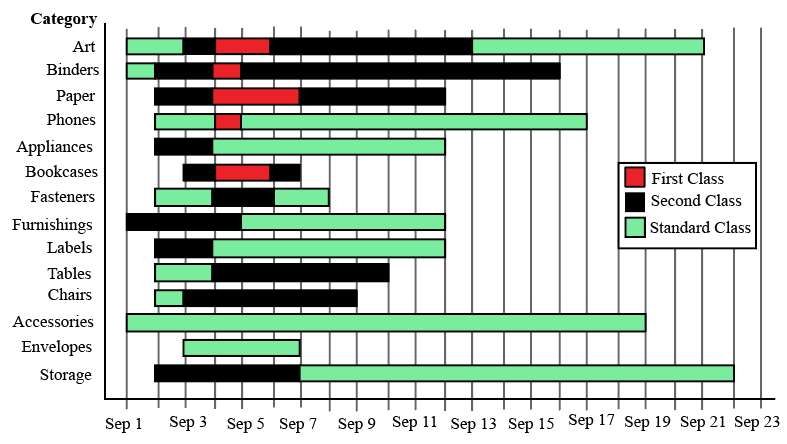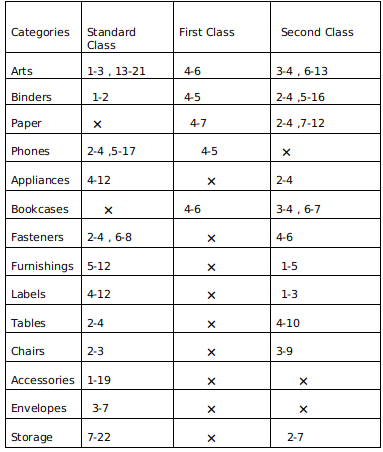CAT 2021 Slot 2 Question Paper
For the following questions answer them individually
CAT 2021 Slot 2 - Question 21
The four sentences (labelled 1, 2, 3 and 4) below, when properly sequenced would yield a coherent paragraph. Decide on the proper sequencing of the order of the sentences and key in the sequence of the four numbers as your answer:
1. Look forward a few decades to an invention which can end the energy crisis, change the global economy and curb climate change at a stroke: commercial fusion power.
2. To gain meaningful insights, logic has to be accompanied by asking probing questions of nature through controlled tests, precise observations and clever analysis.
3. The greatest of all inventions is the über-invention that has provided the insights on which others depend: the modern scientific method.
4. This invention is inconceivable without the scientific method; it will rest on the application of a diverse range of scientific insights, such as the process transforming hydrogen into helium to release huge amounts of energy.
789
456
123
0.-
Clear All
CAT 2021 Slot 2 - Question 22
The passage given below is followed by four alternate summaries. Choose the option that best captures the essence of the passage.
Creativity is now viewed as the engine of economic progress. Various organizations are devoted to its study and promotion; there are encyclopedias and handbooks surveying creativity research. But this proliferating success has tended to erode creativity’s stable identity: it has become so invested with value that it has become impossible to police its meaning and the practices that supposedly identify and encourage it. Many people and organizations committed to producing original thoughts now feel that undue obsession with the idea of creativity gets in the way of real creativity.
CAT 2021 Slot 2 - Question 23
The four sentences (labelled 1, 2, 3 and 4) below, when properly sequenced would yield a coherent paragraph. Decide on the proper sequencing of the order of the sentences and key in the sequence of the four numbers as your answer:
1. The US has long maintained that the Northwest Passage is an international strait through which its commercial and military vessels have the right to pass without seeking Canada’s permission.
2. Canada, which officially acquired the group of islands forming the Northwest Passage in 1880, claims sovereignty over all the shipping routes through the Passage.
3. The dispute could be transitory, however, as scientists speculate that the entire Arctic Ocean will soon be ice-free in summer, so ship owners will not have to ask for permission to sail through any of the Northwest Passage routes.
4. The US and Canada have never legally settled the question of access through the Passage, but have an agreement whereby the US needs to seek Canada’s consent for any transit.
789
456
123
0.-
Clear All
CAT 2021 Slot 2 - Question 24
The passage given below is followed by four alternate summaries. Choose the option that best captures the essence of the passage.
The unlikely alliance of the incumbent industrialist and the distressed unemployed worker is especially powerful amid the debris of corporate bankruptcies and layoffs. In an economic downturn, the capitalist is more likely to focus on costs of the competition emanating from free markets than on the opportunities they create. And the unemployed worker will find many others in a similar condition and with anxieties similar to his, which will make it easier for them to organize together. Using the cover and the political organization provided by the distressed, the capitalist captures the political agenda.

The different bars in the diagram above provide information about different orders in various categories (Art, Binders, ….) that were booked in the first two weeks of September of a store for one client. The colour and pattern of a bar denotes the ship mode (First Class / Second Class / Standard Class). The left end point of a bar indicates the booking day of the order, while the right end point indicates the dispatch day of the order. The difference between the dispatch day and the booking day (measured in terms of the number of days) is called the processing time of the order. For the same category, an order is considered for booking only after the previous order of the same category is dispatched. No two consecutive orders of the same category had identical ship mode during this period.
For example, there were only two orders in the furnishing category during this period. The first one was shipped in the Second Class. It was booked on Sep 1 and dispatched on Sep 5. The second order was shipped in the Standard class. It was booked on Sep 5 (although the order might have been placed before that) and dispatched on Sep 12. So the processing times were 4 and 7 days respectively for these orders.
CAT 2021 Slot 2 - Question 25
How many days between Sep 1 and Sep 14 (both inclusive) had no booking from this client considering all the above categories?
789
456
123
0.-
Clear All
CAT 2021 Slot 2 - Question 26
What was the average processing time of all orders in the categories which had only one type of ship mode?
789
456
123
0.-
Clear All
CAT 2021 Slot 2 - Question 27
The sequence of categories -- Art, Binders, Paper and Phones -- in decreasing order of average processing time of their orders in this period is:
CAT 2021 Slot 2 - Question 28
Approximately what percentage of orders had a processing time of one day during the period Sep 1 to Sep 22 (both dates inclusive)?
Ten objects o1, o2, …, o10 were distributed among Amar, Barat, Charles, Disha, and Elise. Each item went to exactly one person. Each person got exactly two of the items, and this pair of objects is called her/his bundle.
The following table shows how each person values each object.

The value of any bundle by a person is the sum of that person’s values of the objects in that bundle. A person X envies another person Y if X values Y’s bundle more than X’s own bundle.
For example, hypothetically suppose Amar’s bundle consists of o1 and o2, and Barat’s bundle consists of o3 and o4. Then Amar values his own bundle at 4 + 9 = 13 and Barat’s bundle at 9 + 3 = 12. Hence Amar does not envy Barat. On the other hand, Barat values his own bundle at 7 + 5 = 12 and Amar’s bundle at 5 + 9 = 14. Hence Barat envies Amar.
The following facts are known about the actual distribution of the objects among the five people.
1. If someone’s value for an object is 10, then she/he received that object.
2. Objects o1, o2, and o3 were given to three different people.
3. Objects o1 and o8 were given to different people.
4. Three people value their own bundles at 16. No one values her/his own bundle at a number higher than 16.
5. Disha values her own bundle at an odd number. All others value their own bundles at an even number.
6. Some people who value their own bundles less than 16 envy some other people who value their own bundle at 16. No one else envies others.






